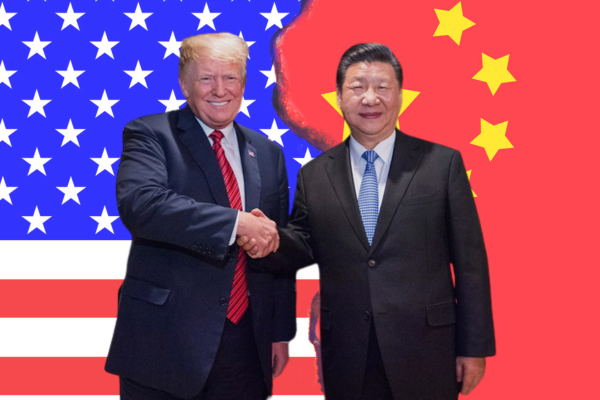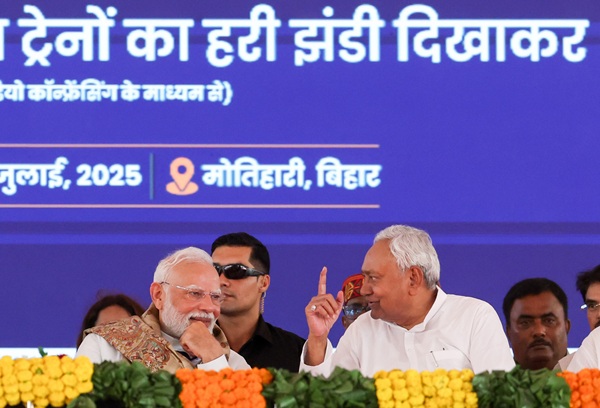In a face-to-face meeting last week, Chinese President Xi Jinping and US President Donald Trump reached a truce in their countries’ long-running trade war. Trump lowered tariffs on Chinese goods in exchange for the rollback of Chinese export controls on rare earths. Many have depicted the deal as a victory for China: by raising the specter of a rare-earth supply shortage, Xi forced the US to make concessions on tariffs. But a closer look at the numbers suggests that China is not the rare-earth juggernaut it might seem to be.
.png)
China's Rare-Earth Own Goal
Whereas the conventional wisdom holds that the US depends on Chinese rare earths, it is actually China that depends on the US (and others) for higher value-added processed minerals.


Daniel Gros is Director of the Institute for European Policymaking at Bocconi University.
November 6, 2025 at 4:29 AM IST
Rare earths are essential to the manufacture of many high-tech products, from smartphones to fighter jets, and at first glance, China appears to have a near-monopoly on them, accounting for more than 70% of the United States’ rare-earth imports. But this figure represents relatively unprocessed rare-earth metals, total US imports of which amount to only $25 million annually. While China takes in more than $21 million of that total, this is a negligible fraction (0.001%) of overall US imports.
Even if the US lost access to rare-earth metals, the damage to its economy would be limited. For example, one key application of these minerals is to make stronger permanent magnets. But there are perfectly functional, if more expensive, alternatives. Imagine that it costs ten times more to make magnets without Chinese-sourced rare earths; that is still only $250 million – a rounding error for a country with a GDP of nearly $30 trillion.
Crucially, rare-earth minerals are also traded in a second form – rare-earth compounds – which are both more processed and much more important for manufacturing. And when it comes to these compounds, the US boasts a large surplus, especially with China. In 2023, US exports of rare-earth compounds amounted to $355 million – almost double the size of the country’s imports ($180 million) – with exports to China accounting for nearly 90% of the total. Overall, China imported about $1.4 billion worth of rare-earth compounds in 2024 (not just from the US), while exporting only about $400 million in rare-earth metals. In 2023, the deficit was even higher.
So, whereas the conventional wisdom holds that the US depends on Chinese rare earths, putting it at a severe geopolitical disadvantage, it is actually China that depends on the US (and others) for higher value-added processed minerals. Moreover, China’s rare-earth-compound deficit has been growing fast in recent years, as the country’s high-tech industries have expanded, while its exports of rare-earth metals have stagnated.
Given the nature of the two countries’ manufacturing sectors, this makes perfect sense. In the US, this sector is rather small and specializes in high-tech niche products, so the country mostly needs rare earths for military production. These needs are not negligible, but nor are they particularly complex or difficult to meet. Building one F-35 fighter jet, for example, requires several hundred pounds of a single rare-earth element, dysprosium. According to the US Geological Survey, the US imports about 300 tons of dysprosium annually. That is enough to build a thousand F-35s – far more than the 120-150 of these planes the US produces each year.
By contrast, China’s vast manufacturing sector produces enormous quantities of consumer products that demand rare-earth inputs. Consider smartphones: in total weight, the amount of rare earths needed to produce one F-35 is comparable to that needed to produce a million smartphones, and the amount needed to produce a thousand F-35s is comparable to that needed for the billion smartphones that are currently produced annually. Given that China produces not only millions of smartphones, but also many other electronics, its overall rare-earth needs are much larger than those of the US.
Compounding the challenge for China, producing one smartphone requires small amounts – an estimated 0.3 grams – of many different rare-earth components, not in their unprocessed metallic form, but rather as tiny additions to many different compounds. America’s surplus in rare-earth compounds thus gives it significant leverage. If China limits exports of rare-earth metals, it risks losing access to the rare-earth compounds its manufacturing sector so badly needs.
China’s government overplayed its hand on rare earths before. In 2010, it sharply restricted rare-earth exports, not for geopolitical purposes, but rather to encourage more domestic processing of the metals. When prices rose sharply, peaking at up to ten times their previous level, global producers poured investment into developing alternative processes and materials. Soon, demand collapsed.
As it turns out, rare earths are not irreplaceable. In this sense, US Treasury Secretary Scott Bessent was right to say that China had “made a real mistake” in highlighting its willingness to use rare earths as a geopolitical weapon against the US, which is now more motivated than ever to devise alternatives.
After China imposed export controls in 2010, it took about two years for prices to return to their initial level, and nearly five years for the Chinese government, spurred partly by an adverse World Trade Organization ruling, to rescind the restrictions. But if WTO rules barring such restrictions do not discourage China from imposing them, its deficit in rare-earth compounds – which did not exist 15 years ago – should be reason enough.
© Project Syndicate 1995–2025



